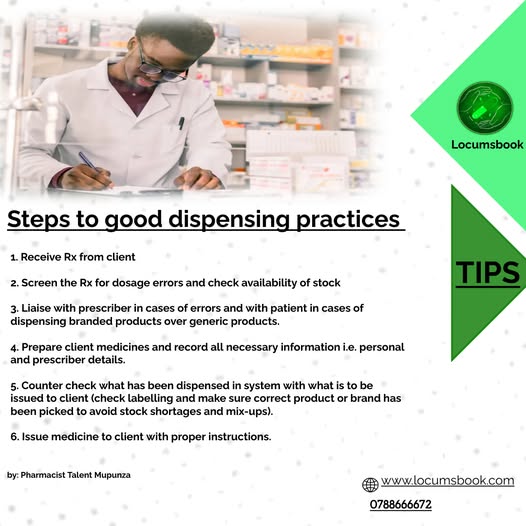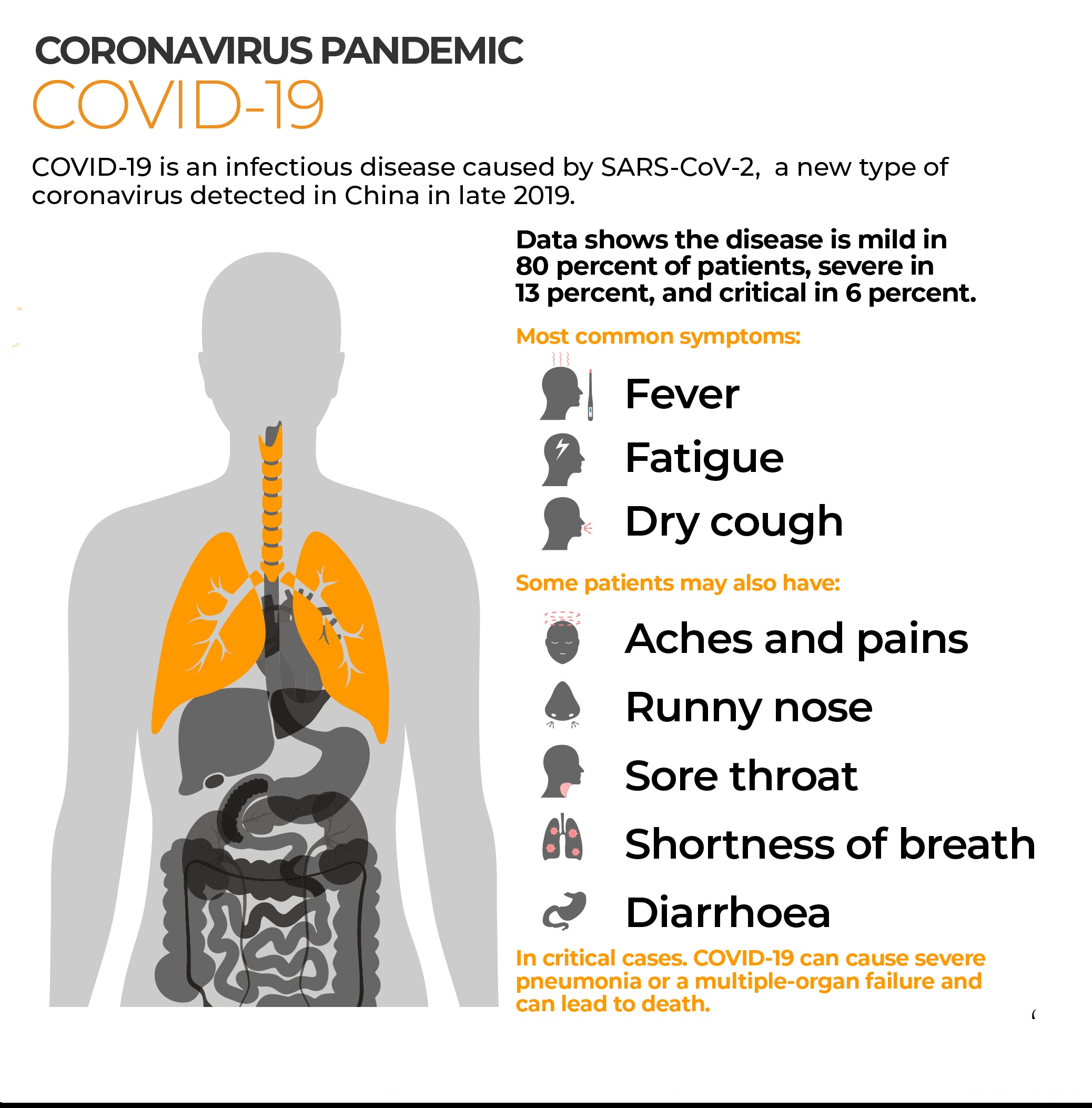Blog
5 min read
Good Dispensing Practises
Good dispensing practice ensures patients receive the right medication, in the right dosage and with right instructions, promoting safe and effective treatment.
F
Featured Blogger
August 17, 2025
140 views

GOOD DISPENSING PRACTICES
20/09/22
1) PAINKILLERS
The principles of pain management indicate that painkillers should be potent, not cause dependence or tolerance, exhibit little adverse effects and act over long periods of time with little sedation. These key points are critical when choosing the type of painkiller one is to dispense to a client.
Fevers and pain, presenting together or individually are the major indicators of illness in patients. Frequently than not their management will result in the resolution of the problems that a patient presented with. The prescribing of pain medications becomes crucial as this will remove much of the discomfort a client is suffering from and enhance the healing process. However though this topic to professionals might seem simple, a lot of prescribing mistakes have been encountered and overlooking of a client’s comorbidities also has led to some underlying conditions worsening.
We are going to look at some common drugs that are taken by patients, looking at how they ought to be dispensed and complications that may arise in patients that take these drugs.
(a) Diclofenac
Commonly found as 25 or 50mg tablets, prescribed majorly for bone and joint pain. Very effective in patients with early stage arthritis, hence commonly used by the elderly population. Dosing of the drug is commonly three times a day and should be taken after food to curb any G.I.T upsets, common with this drug. Twice daily dosing is even possible with some sustained release formulations. Common side effects are the NSAID induced peptic ulcers which develop in 40% of all patients on long term treatment with this drug and most recently cardiovascular complications like heart attack and strokes have been linked to patients taking this drug. A much safer substitute with lesser G.I.T complications is Aceclofenac, however the risk to cardiovascular events remains and has to be monitored still.
(b) Celecoxib
Very potent among the NSAID painkillers, the drug is generally found as 100 to 200mg capsules. It has fewer GIT side effects than the later hence becoming a go to drug for most physicians.
Dosing can be once or twice daily dosing as the half-life of the drug stretches to over 11hrs. This makes three times daily dosing very unnecessary and costly to the patient as the drug is not cheap and proper education of the patient is required.
Side effects to note are increased risk to cardiovascular events which led to the discontinuation of the drug rofecoxib which belonged to this class. Another side effect to note is the hypersensitive reactions that have been reported, culprit to this being the presence of the sulphonamide moiety. This can lead to serious cutaneous conditions like Steven-Johnson’s Syndrome.
Sulphur allergy history must be taken when dispensing these to patients.
(c) Piroxicam
Not as common as its predecessors on this list but one prescribers need to pay special attention to. Usually found as 10 and 20mg capsules, Piroxicam is a potent NSAID used in patients with rheumatoid and osteoarthritis for pain relief.
It is given once a day with the 10mg possibly split into twice daily dosing, however it’s been noted that some physicians prescribe even the 20mg twice a day which is highly unnecessary as it provides a risk of major black box side effects of the drug.
It carries a black box warning for increased risk of getting heart disease especially at higher doses, peptic ulcers and G.I.T bleeding which can be fatal. Other warnings include restriction of use in patients with high blood pressure and asthmatics as it may exacerbate these conditions.
(d) Ibuprofen
Of all the above mentioned, probably the most commonly used and widely available NSAID used for varying types of pain including menstrual pains, muscle and toothaches.
Found as 200mg tablets or capsules and 400mg tablets the recommended dosage in adults is between 400-800mg three times a day after meals only when there is pain.
A major cause of concern when taking ibuprofen is its ability to affect the production of prostaglandins to a greater extent than other NSAIDS. This in turn can lead to decreased kidney function and elevated blood pressure.
Other reported cases indicate that an over dependence on ibuprofen can lead also to decreased libido and sperm count in male patients taking the drug for chronic pain relief.
Care must be taken when dispensing this drug to hypertensive patients.
(e) OPIATES OR OPIATE CONTAINING COMBINATION DRUGS
Several drugs combinations exist with most being Dangerous Drugs reserved for special patients under the supervision of a physician, however several combination therapies exist. These usually contain codeine as the active opiate and other analgesics to enhance the pain relief.
With these drugs special care must be taken as they might lead to over dependence on them hence addiction. Though under supervision it might be minimal it is still a point worth noting.
Use in headaches is common but if suspicion that the headache might be a migraine, use of opiates is highly contraindicated as they aggravate serious nausea and vomiting, also potential of addiction to use. Rebound headaches are also very common with use hence care must be taken when prescribing these to a patient.
BY TALENT J MUPUNZA
20/09/22
1) PAINKILLERS
The principles of pain management indicate that painkillers should be potent, not cause dependence or tolerance, exhibit little adverse effects and act over long periods of time with little sedation. These key points are critical when choosing the type of painkiller one is to dispense to a client.
Fevers and pain, presenting together or individually are the major indicators of illness in patients. Frequently than not their management will result in the resolution of the problems that a patient presented with. The prescribing of pain medications becomes crucial as this will remove much of the discomfort a client is suffering from and enhance the healing process. However though this topic to professionals might seem simple, a lot of prescribing mistakes have been encountered and overlooking of a client’s comorbidities also has led to some underlying conditions worsening.
We are going to look at some common drugs that are taken by patients, looking at how they ought to be dispensed and complications that may arise in patients that take these drugs.
(a) Diclofenac
Commonly found as 25 or 50mg tablets, prescribed majorly for bone and joint pain. Very effective in patients with early stage arthritis, hence commonly used by the elderly population. Dosing of the drug is commonly three times a day and should be taken after food to curb any G.I.T upsets, common with this drug. Twice daily dosing is even possible with some sustained release formulations. Common side effects are the NSAID induced peptic ulcers which develop in 40% of all patients on long term treatment with this drug and most recently cardiovascular complications like heart attack and strokes have been linked to patients taking this drug. A much safer substitute with lesser G.I.T complications is Aceclofenac, however the risk to cardiovascular events remains and has to be monitored still.
(b) Celecoxib
Very potent among the NSAID painkillers, the drug is generally found as 100 to 200mg capsules. It has fewer GIT side effects than the later hence becoming a go to drug for most physicians.
Dosing can be once or twice daily dosing as the half-life of the drug stretches to over 11hrs. This makes three times daily dosing very unnecessary and costly to the patient as the drug is not cheap and proper education of the patient is required.
Side effects to note are increased risk to cardiovascular events which led to the discontinuation of the drug rofecoxib which belonged to this class. Another side effect to note is the hypersensitive reactions that have been reported, culprit to this being the presence of the sulphonamide moiety. This can lead to serious cutaneous conditions like Steven-Johnson’s Syndrome.
Sulphur allergy history must be taken when dispensing these to patients.
(c) Piroxicam
Not as common as its predecessors on this list but one prescribers need to pay special attention to. Usually found as 10 and 20mg capsules, Piroxicam is a potent NSAID used in patients with rheumatoid and osteoarthritis for pain relief.
It is given once a day with the 10mg possibly split into twice daily dosing, however it’s been noted that some physicians prescribe even the 20mg twice a day which is highly unnecessary as it provides a risk of major black box side effects of the drug.
It carries a black box warning for increased risk of getting heart disease especially at higher doses, peptic ulcers and G.I.T bleeding which can be fatal. Other warnings include restriction of use in patients with high blood pressure and asthmatics as it may exacerbate these conditions.
(d) Ibuprofen
Of all the above mentioned, probably the most commonly used and widely available NSAID used for varying types of pain including menstrual pains, muscle and toothaches.
Found as 200mg tablets or capsules and 400mg tablets the recommended dosage in adults is between 400-800mg three times a day after meals only when there is pain.
A major cause of concern when taking ibuprofen is its ability to affect the production of prostaglandins to a greater extent than other NSAIDS. This in turn can lead to decreased kidney function and elevated blood pressure.
Other reported cases indicate that an over dependence on ibuprofen can lead also to decreased libido and sperm count in male patients taking the drug for chronic pain relief.
Care must be taken when dispensing this drug to hypertensive patients.
(e) OPIATES OR OPIATE CONTAINING COMBINATION DRUGS
Several drugs combinations exist with most being Dangerous Drugs reserved for special patients under the supervision of a physician, however several combination therapies exist. These usually contain codeine as the active opiate and other analgesics to enhance the pain relief.
With these drugs special care must be taken as they might lead to over dependence on them hence addiction. Though under supervision it might be minimal it is still a point worth noting.
Use in headaches is common but if suspicion that the headache might be a migraine, use of opiates is highly contraindicated as they aggravate serious nausea and vomiting, also potential of addiction to use. Rebound headaches are also very common with use hence care must be taken when prescribing these to a patient.
BY TALENT J MUPUNZA


